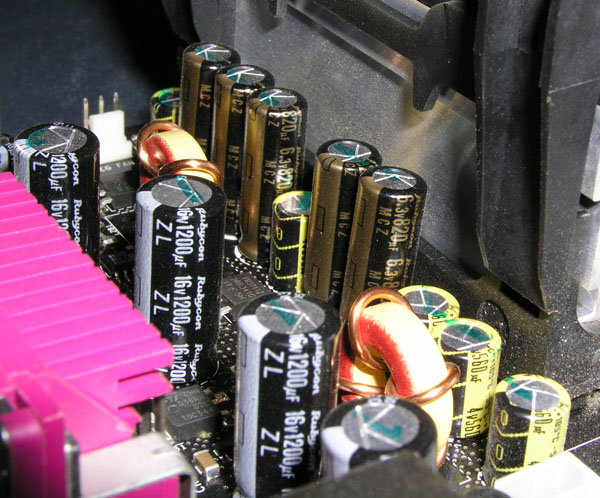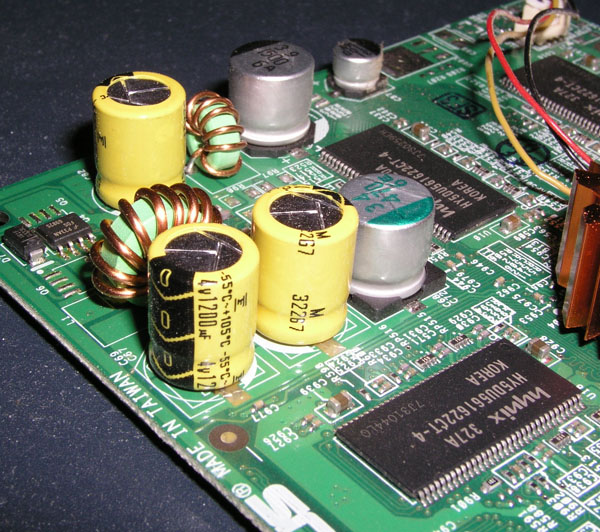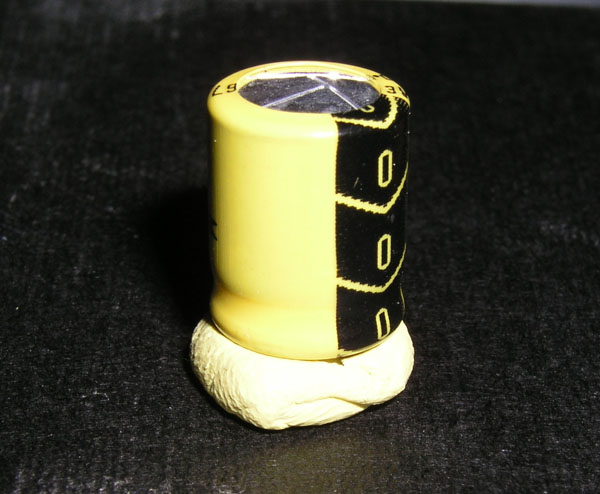KC8 revealed some interesting info recently which suprised me since i have apparently mistaken these little yellow bastards as good caps. I saw one slightly bulging on an asus cusl2-m board and so recapped it to be sure as i was not sure it was bad but did not want probs in the future on an office computer.

little yellow bastards in rather superior company on an Intel D875PBZLK (my main system). Why put them there when they could have saved money not using the ultimate cap the Rubycon MCZ and instead put all Rubycon ZL.
 '
'
them again on an asus gf fx5600.

here is that cap off the CUSL2-M. very slightly bulging.
can we get an ID on these caps. KC8 said they might be Fairchild but an extensive google has not brought success.
little yellow bastards in rather superior company on an Intel D875PBZLK (my main system). Why put them there when they could have saved money not using the ultimate cap the Rubycon MCZ and instead put all Rubycon ZL.
them again on an asus gf fx5600.
here is that cap off the CUSL2-M. very slightly bulging.
can we get an ID on these caps. KC8 said they might be Fairchild but an extensive google has not brought success.

Comment